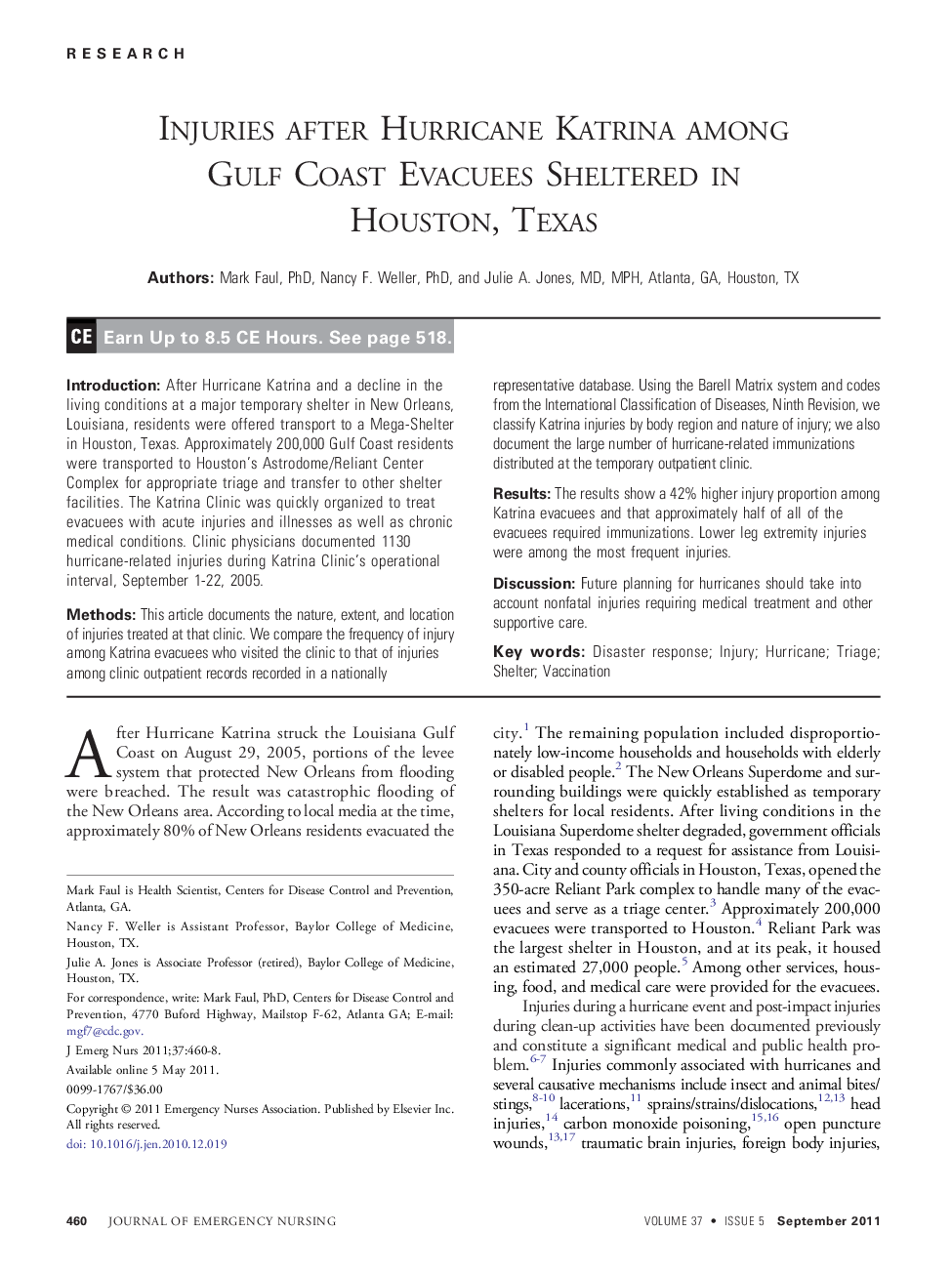| Article ID | Journal | Published Year | Pages | File Type |
|---|---|---|---|---|
| 2610292 | Journal of Emergency Nursing | 2011 | 9 Pages |
IntroductionAfter Hurricane Katrina and a decline in the living conditions at a major temporary shelter in New Orleans, Louisiana, residents were offered transport to a Mega-Shelter in Houston, Texas. Approximately 200,000 Gulf Coast residents were transported to Houston's Astrodome/Reliant Center Complex for appropriate triage and transfer to other shelter facilities. The Katrina Clinic was quickly organized to treat evacuees with acute injuries and illnesses as well as chronic medical conditions. Clinic physicians documented 1130 hurricane-related injuries during Katrina Clinic's operational interval, September 1-22, 2005.MethodsThis article documents the nature, extent, and location of injuries treated at that clinic. We compare the frequency of injury among Katrina evacuees who visited the clinic to that of injuries among clinic outpatient records recorded in a nationally representative database. Using the Barell Matrix system and codes from the International Classification of Diseases, Ninth Revision, we classify Katrina injuries by body region and nature of injury; we also document the large number of hurricane-related immunizations distributed at the temporary outpatient clinic.ResultsThe results show a 42% higher injury proportion among Katrina evacuees and that approximately half of all of the evacuees required immunizations. Lower leg extremity injuries were among the most frequent injuries.DiscussionFuture planning for hurricanes should take into account nonfatal injuries requiring medical treatment and other supportive care.
